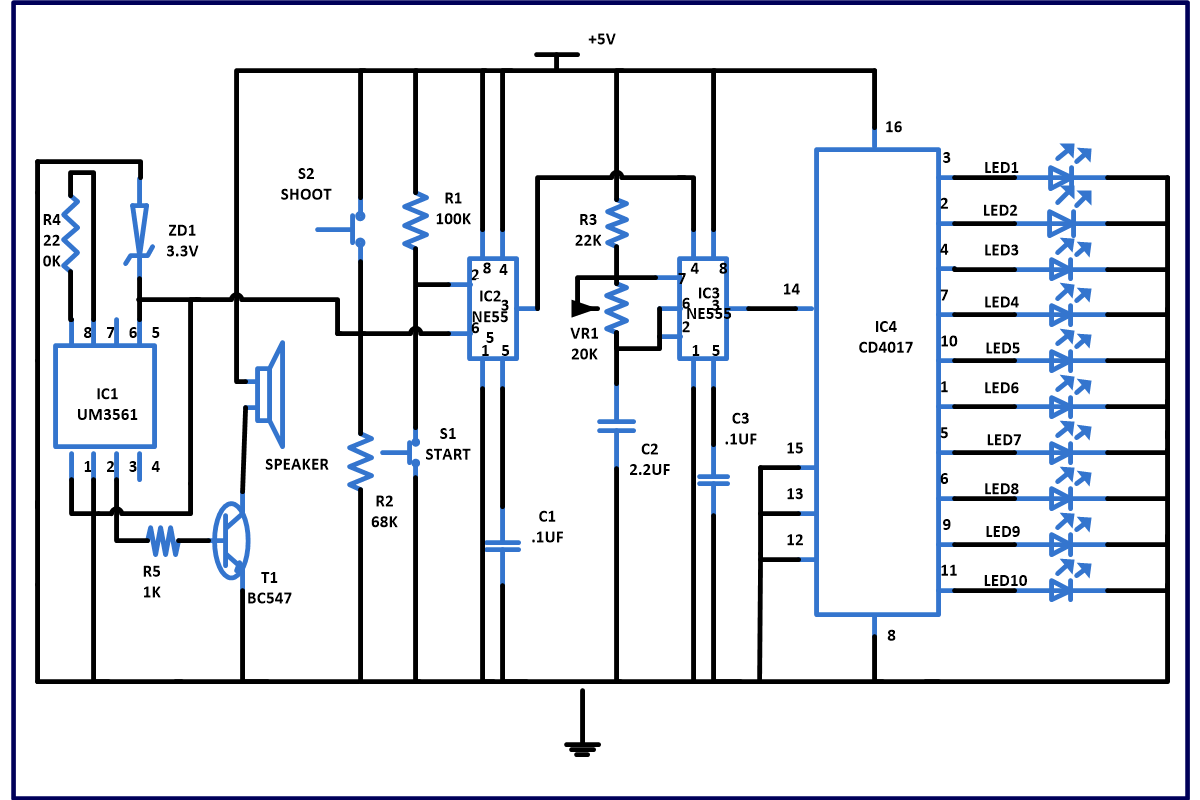● Today video games are very popular among children. The circuit describe below is similar to shooting video game in this one has to hit the target given by another contestant. If he shoots the given target than 10 points will be given and in the end whose score is more will be declare as winner.
● Advantage of this circuit is it will not harm the eyes of children when they play for long duration. As instead of video screen this circuit uses LED for display.
● It can be easily assemble because of less and easily available components.
● This circuit also produces a sound when you hit the target like you get in video games. So children will get feel of real video game.
● You can easily power the circuit with the help of adapter available in market.
● There is no restriction on the number of contestant who can play the game.
[[wysiwyg_imageupload:10875:]]
Fig. 1: Prortotype of "Hit the Traget" Circuit on Breadboard
How to play
|
Sound
|
pin 1
|
pin6
|
|
Police siren
|
Unconnected
|
Unconnected
|
|
Fire force
|
Unconnected
|
Supply
|
|
Ambulance
|
Unconnected
|
Ground
|
|
Gun sound
|
Supply
|
Unconnected
|
Circuit Diagrams
Project Components
Project Video
Filed Under: Electronic Projects
Filed Under: Electronic Projects



Questions related to this article?
👉Ask and discuss on Electro-Tech-Online.com and EDAboard.com forums.
Tell Us What You Think!!
You must be logged in to post a comment.